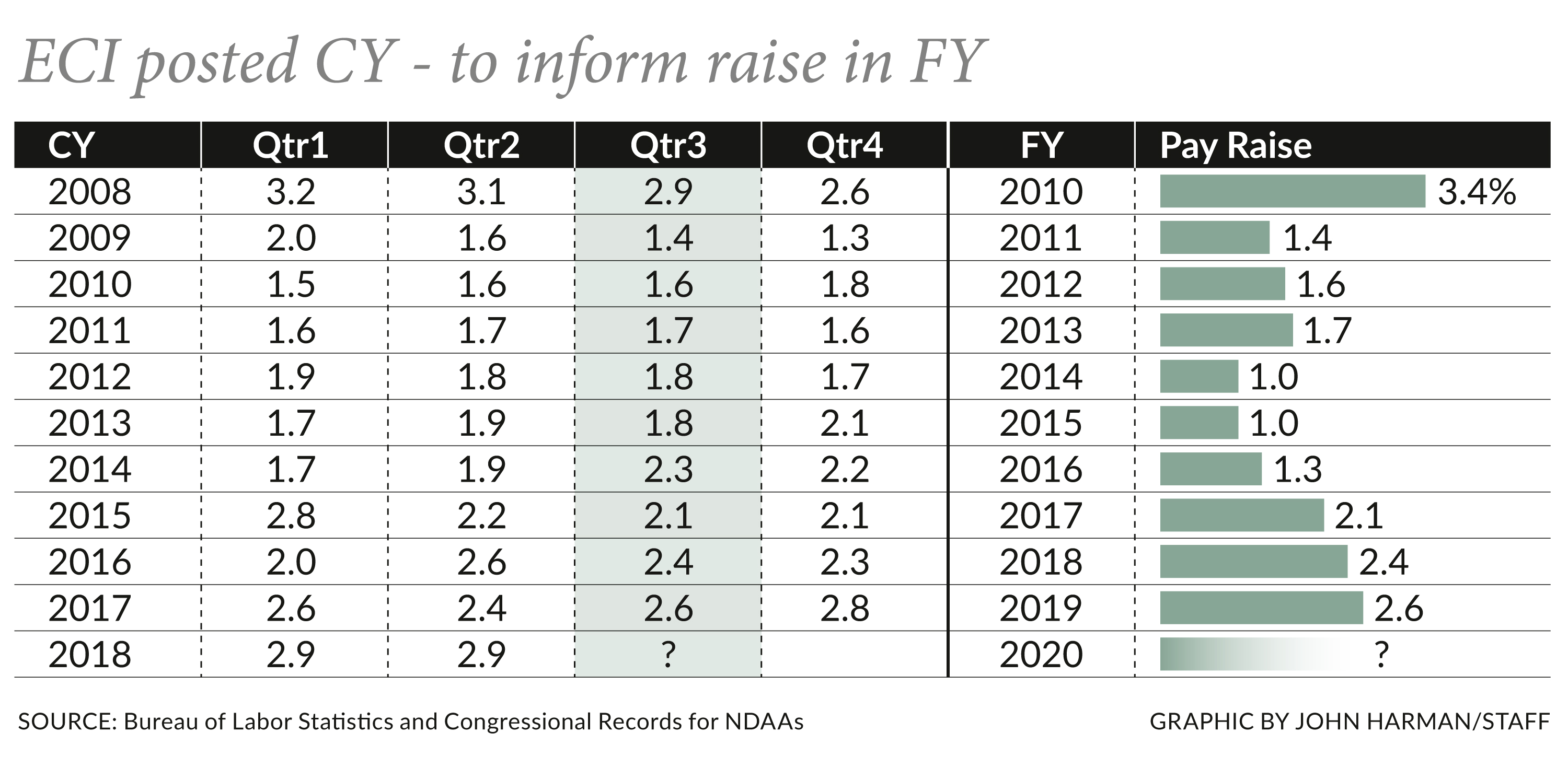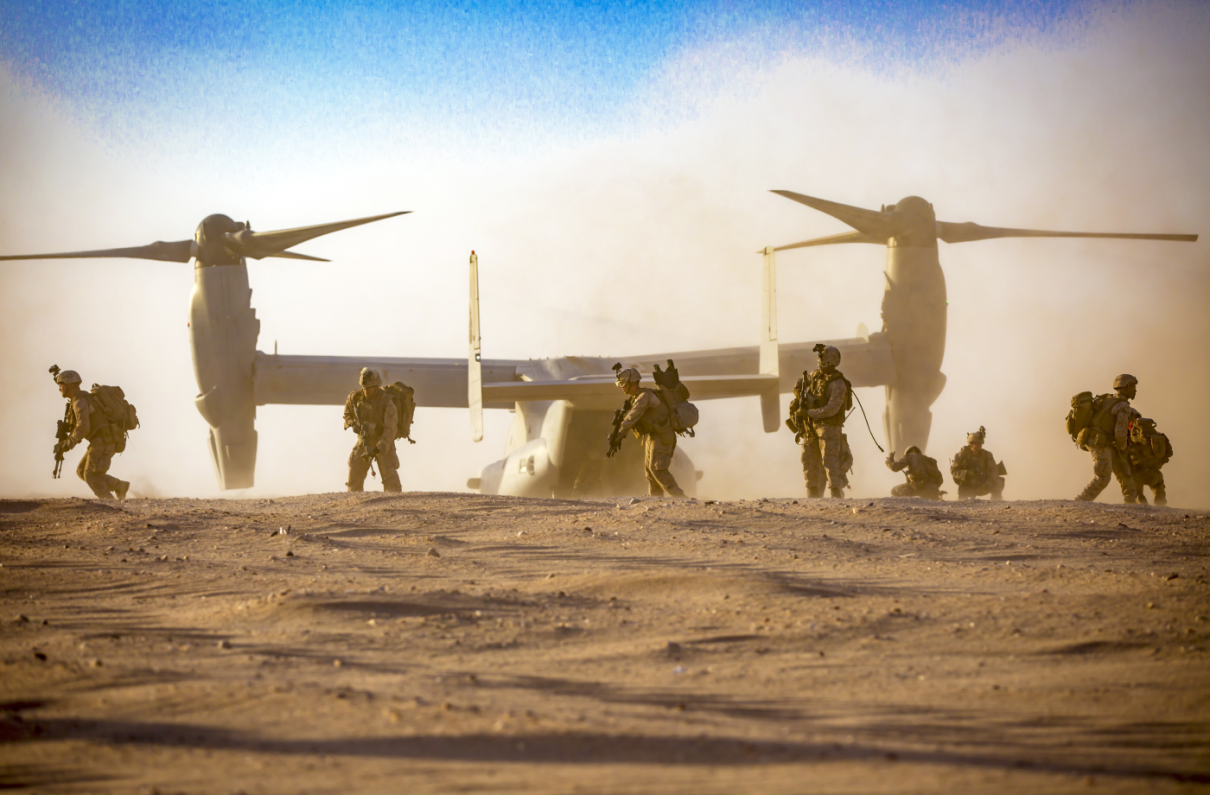The Employment Cost Index (ECI) will be released at the end of October. Brace yourselves: The number could result in another large pay raise.
When the administration's budget was released in February, there was quite a buzz regarding the 2.6 percent military pay raise as it was the largest raise in nine years. As the news cycled, the size of the raise became the dominant theme in the press and on Capitol Hill.
Somewhat ignored was a current, detailed explanation as to why the raise was so big. Per Title 37, Section 1009 of U.S. Code, the military pay raise is intended to match the Employment Cost Index for wages and salaries of private industry workers. The FY 2004 National Defense Authorization Act established the ECI percent increase of the third quarter of the calendar year as the metric for the military pay raise. For more details on ECI, see MOAA's assessment of Military Pay Comparability.
The intent of tying military pay raises to private-sector wage growth is to take the guesswork and fiscal wrangling out of the decision process. As the national cost of labor goes up, so too should the military paycheck. Disregard this for several years and it negatively affects not just recruiting, but retention: When servicemembers hear about wage growth for their civilian counterparts as their pay stagnates, it prompts the more skilled and hirable individuals to look outside the fence … and walk.
Previous pay raise shortages from the early 1980s through 1999 resulted in a staggering 13.5 percent cumulative military-civilian wage-increase gap. The impact to recruiting and retention was palpable, leading Congress to increase raises above ECI between 2000 and 2010 when balance was finally restored.
Other than three sour years (2014-2016) that netted a new 2.6 percent cumulative pay-raise shortfall, we have remained on par with ECI. But it has taken some work.
In FY 2017, MOAA engaged Congress for support to disregard the president's proposed 1.6 percent raise, which would have been the fourth short-raise in a row. Thankfully, with support from the leadership of the armed services committees, Congress passed the full 2.1 percent raise to match ECI, netting an at-par raise for the pay tables but doing nothing to reduce the cumulative 2.6 percent gap lagging from those earlier three years.
The FY 2018 NDAA saw another challenge when the secretary of defense proposed a 2.1 percent raise (presumably to match the previous year's raise), which was endorsed by the Senate. MOAA and The Military Coalition went neck deep into the fray to raise awareness and garner support for the full pay raise per the ECI. In conference, thankfully, the House and Senate agreed and the 2.4 percent raise was signed into law. Of course, the result was the first round of sticker shock: “The largest raise in eight years!”
MOAA and the Coalition again exerted efforts early on with the Armed Services Committees to ensure the full ECI-based 2.6 percent raise made it to the initial draft of the FY 2019 NDAA. The efforts were a success, the House and Senate both agreed and the president signed into law resulting in … “the largest raise in nine years!”
So, what's next? As we look at the information available from the Bureau of Labor Statistics, the keeper of the ECI, we anticipate another bump. The results for the third quarter of the calendar year will be out at the end of October; they will inform the military pay raise target for FY 2020.
The chart below shows the historical third quarter results for ECI. You can see this next quarter may result in an increase over last year.

Balancing any enthusiasm, we note some indications the number could go down. First, if the recent 10 years are any indication, the cumulative effect between Q2 and Q3 has a net change of minus-0.2 percentage points, so the straight math would indicate a potential for a drop. Second, as reported by Reuters on Oct. 5, “U.S. job growth slowed sharply in September likely as Hurricane Florence depressed restaurant and retail payrolls, but unemployment fell to a near 49-year low of 3.7 percent, pointing to a further tightening in labor market conditions.” Either way, national labor costs need to inform military pay raises, the law says so, and we will remain vigilant in this pursuit.
Whether this upcoming ECI will be 2.7 or 3.1 percent, or somewhere in between, we could be about to witness the largest raise in 10 years.
Looking ahead, what will be the inclination of decision makers and legislators if this is a truly remarkable raise? As we have seen in the past, one reaction would be to invoke the president's authority to cap the pay raise due to economic hardships (i.e., sequestration) or reasons of national security. Congress may again look deeper into personnel accounts and seek changes to housing allowances.
MOAA will be watching this as it unfolds, starting with the ECI release at the end of the month and working with the armed services committees to ensure the costs of any raise are not put on the backs of our uniformed servicemembers.
Rest assured we will put our full effort behind sustaining pay comparability with the private sector as this is essential to recruiting and retaining our all-volunteer force.
